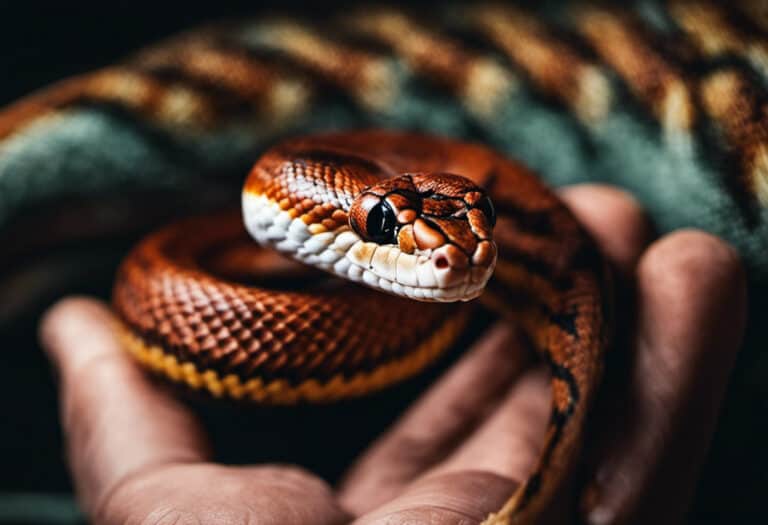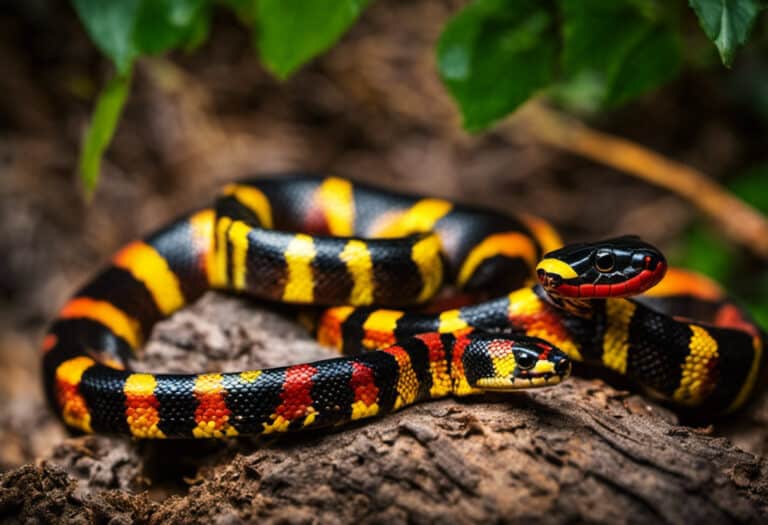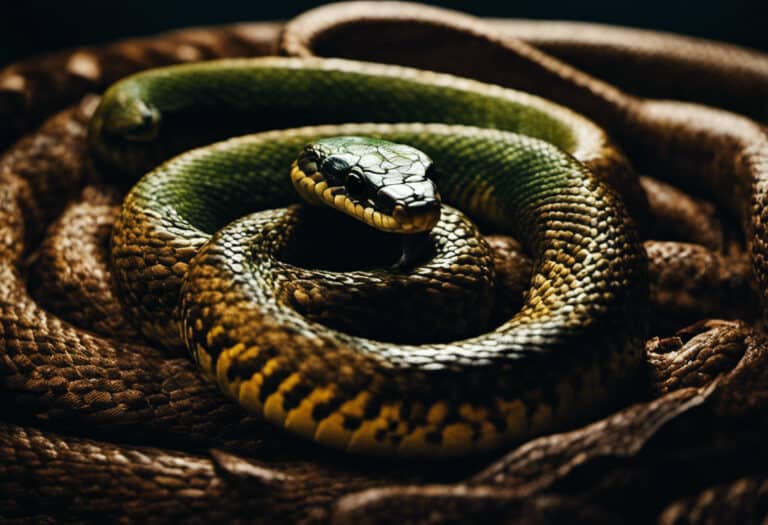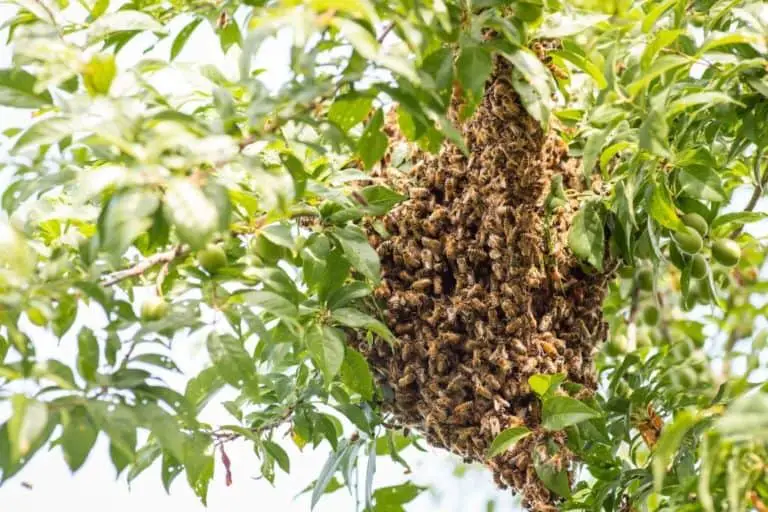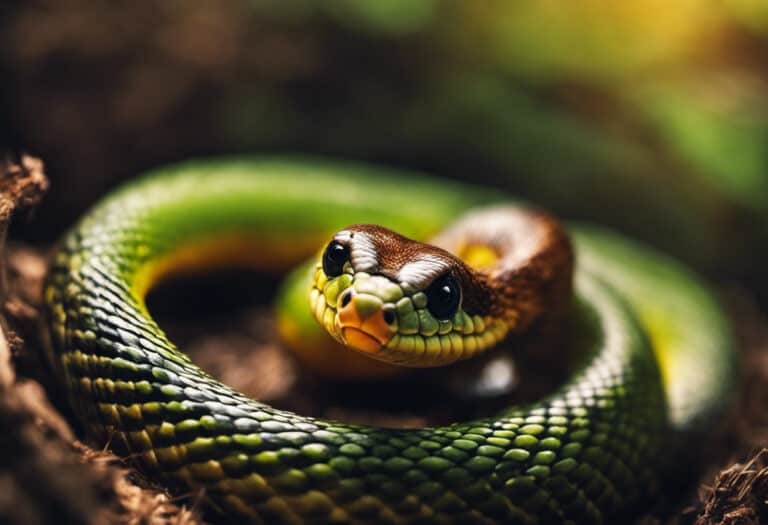Do Snakes Have Red Blood? Fun and Informative Insights
Snakes are fascinating creatures with unique characteristics, and one intriguing aspect of their biology is their blood. Contrary to popular belief, snakes have red blood like humans and other mammals.
This is because snakes, like all vertebrates, have blood containing red blood cells responsible for carrying oxygen throughout the body. The red color of the blood comes from a protein called hemoglobin, which binds to oxygen and gives the cells their characteristic red hue.
However, it is essential to note that not all snakes have the same blood type. Some species, such as the Burmese python, have been found to have particular adaptations in their blood and metabolism.
These snakes can go for extended periods without eating and undergo metabolic changes when they do eat. Researchers have found that Burmese pythons can rapidly increase their glucose disposal in the gut, which is not dependent on insulin. This unique metabolic response has sparked interest in studying these snakes to gain insights into diabetes research and potential treatments.
In addition to studying the metabolic adaptations of snakes, researchers have also used genetic markers to study various aspects of snake biology.
Microsatellite DNA markers have been used to analyze snakes’ population differentiation, kinship, and reproductive behaviors. These studies have revealed intriguing patterns of local population structure and provided insights into mating systems, reproductive success, and snake selection pressures. Such genetic analyses have proven invaluable in revealing hidden aspects of snake behavior and ecological factors contributing to restricted gene flow.
Key Takeaways:
- Snakes do have red blood due to the presence of red blood cells and hemoglobin.
- Some snakes, such as the Burmese python, have unique metabolic adaptations that can provide insights into diabetes research.
- Genetic markers have been used to study various aspects of snake biology, such as population differentiation and reproductive behaviors.
- Studying snake biology can provide fun and informative insights into their unique physiology and potentially uncover new strategies for treating human diseases.
The Composition of Reptilian Blood
The answer to whether snakes have red blood lies in the composition of reptilian blood. While mammalian blood is red due to the presence of hemoglobin, which binds to and transports oxygen, reptilian blood can vary in color.
This is because the hemoglobin found in reptilian blood has a different molecular structure than that found in mammals, resulting in a non-red color.
Various studies have explored the factors that influence the size and shape of erythrocytes, which are responsible for oxygen transport in the blood.
These studies have shown that erythrocyte size and shape can vary based on environmental factors such as altitude, species-specific life history, and behavior. For instance, reptiles living at higher altitudes tend to have smaller erythrocytes, while diving and viviparous species have larger erythrocytes.
| Environmental factors | Effect on erythrocyte size and shape |
|---|---|
| Higher altitudes | Smaller erythrocytes |
| Diving and viviparous species | Larger erythrocytes |
In addition to environmental factors, erythrocyte size can change throughout an organism’s life and is influenced by oxygen demand and metabolic rate.
Researchers have also used genetic analysis using microsatellite DNA markers to gain insights into snakes’ population differentiation, kinship, and reproductive success. These genetic markers have revealed hidden aspects of snake behavior and ecology, such as restricted gene flow and multiple paternity in mating.
By studying the composition of reptilian blood, researchers can better understand the physiology, ecology, and evolutionary biology of reptiles. This can lead to potential medical advancements and a better understanding of snake reproductive strategies.
“The size and shape of erythrocytes in reptiles can vary based on environmental factors such as altitude, as well as species-specific life history and behavior.”
Snake Blood Color in Reptiles
This variation in blood color is not just limited to snakes but is common among other reptiles. While the blood of mammals appears red due to the presence of red blood cells, the blood of reptiles, including snakes, does not contain these cells. This lack of red blood cells results in a non-red blood color that varies from species to species and can range from yellow to green to blue.
The absence of red blood cells in reptiles indicates no health problems but is an evolutionary adaptation. The unique composition of reptilian blood allows it to perform the same essential functions as mammalian blood, such as transporting oxygen and removing waste products from the body.
While snake blood color may vary from species to species, it generally appears pale pink due to the presence of hemoglobin.
Hemoglobin is a protein that binds to oxygen molecules and is responsible for transporting oxygen from the lungs to the rest of the body. In snakes and other reptiles, hemoglobin has a slightly different molecular structure than in mammals, resulting in a non-red blood color.
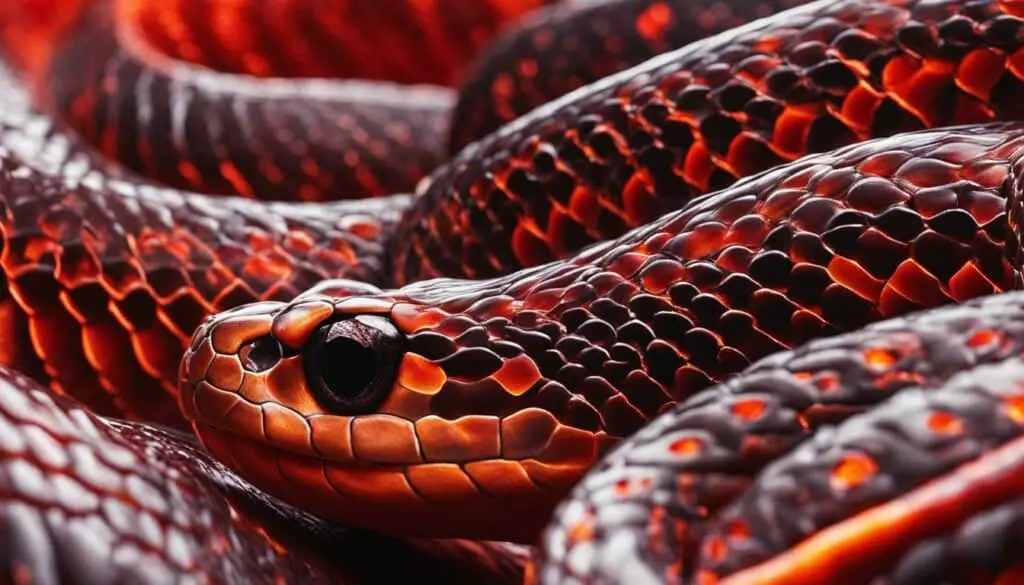
The color of snake blood may also vary depending on the snake’s environment and activity level. For example, during periods of low activity, the blood may appear paler, while during physical exertion or hunting, the blood may appear pinker.
Snake Blood Color in Reptiles
The absence of red blood in snakes and other reptiles does not affect their ability to deliver oxygen to their cells. The unique hemoglobin found in snake blood, which differs from that in mammals, still binds and transports oxygen from the lungs to the rest of the body, sustaining their metabolism and life.
Studies have shown that oxygen transport in snake blood is influenced by various factors, such as the snake’s activity level and environment. Snakes with higher oxygen demands, such as diving and viviparous species, tend to have larger erythrocytes. On the other hand, snakes that inhabit high altitudes or engage in active foraging have smaller erythrocytes associated with faster oxygen delivery.
Additionally, genetic markers have been used to analyze local population differentiation and parentage in snakes, providing valuable insights into their behavior and ecology. This research has contributed to a better understanding of these fascinating reptiles’ physiological and evolutionary adaptations.
While snakes’ lack of red blood may seem peculiar, it is a natural adaptation that allows them to survive in their unique environments. The study of snake blood and its oxygen transport properties provides valuable insights into the biology and behavior of these fascinating animals.

Factors Influencing Snake Blood Color
Interestingly, the color of snake blood can also vary depending on their activity level and environment. While snake blood is typically non-red, it may appear paler or pinker under specific circumstances.
Snake activity level is a significant factor in determining blood color. During periods of low activity, snake blood may appear paler due to reduced oxygen demands. In contrast, snake blood may appear pinker during intense physical activity or hunting when oxygen demands increase.
Environmental factors can also influence snake blood color. Specific environments, such as those with low oxygen levels, may cause snake blood to appear paler due to decreased oxygen saturation. Specific diets or health conditions can also affect the blood color of snakes.

Further research is needed to understand the factors influencing snake blood color fully. However, it is essential to note that the lack of red blood in snakes and other reptiles is not an indication of poor health. Instead, it is a natural adaptation that has allowed them to thrive in their respective environments.
Implications of Snake Blood Studies
Understanding the unique characteristics of snake blood has implications beyond curiosity. Researchers have found that studying the metabolic properties of snakes, such as Burmese pythons, can provide essential insights into diabetes research. The pythons have a unique metabolism that allows them to fast for long periods and process glucose rapidly in the gut. This discovery suggests that targeting the intestine to lower blood sugar levels in people with diabetes may be a viable option.
Additionally, snake blood studies have revealed valuable information about the genetics and physiology of these animals. For example, erythrocyte size variation and kinship analysis have uncovered hidden aspects of snake ecology and provided valuable information for behavioral ecology research. These studies have shed light on the factors contributing to restricted gene flow and sexual selection in snakes.

Snake blood studies offer new avenues for understanding human diseases and provide important information for behavioral ecology research.
By understanding snakes’ blood composition and metabolic processes, we gain insight into a range of medical and ecological fields. These studies can potentially lead to new treatments for human diseases and a better understanding of snakes’ behavior and population biology.
Conclusion
In conclusion, snakes do not have red blood like mammals, but their blood color is a natural adaptation. The studies reviewed in this article demonstrate the value of genetic markers, specifically microsatellite DNA loci, in analyzing local population differentiation and parentage in snakes.
These markers have provided insights into the hidden aspects of snake natural history and raised important questions about ecological factors contributing to restricted gene flow. The studies have also shed light on the patterns of reproductive success in snakes, showing that genetic-based measures can sometimes differ from behavioral measures.
Multiple paternity and reproductive success
Multiple paternity was high in the northern water snake, but no fitness advantage was detected for females engaging in numerous mating. Furthermore, the opportunity for selection was more significant in males than females, but no detectable selection on male morphological variation was found.
Genetic analysis of snakes provides previously unobtainable information that interests behavioral ecologists and contributes to a better understanding of snake biology.
FAQ
Q: Why do snakes have non-red blood?
A: Snakes have non-red blood due to the unique molecular structure of their hemoglobin, which is different from that of mammals. This variation in blood color is a natural adaptation and does not affect their ability to transport oxygen.
Q: Do other reptiles also have non-red blood?
A: Yes, other reptiles, such as lizards, turtles, and crocodiles, also have non-red blood. The absence of red blood in snakes is expected in this group.
Q: Does the non-red blood color impact snakes’ ability to deliver oxygen?
A: No, snakes’ absence of red blood does not hinder their ability to deliver oxygen. Their hemoglobin still performs the essential function of binding and transporting oxygen from the lungs to the rest of the body.
Q: Can the color of snake blood change?
A: Yes, the color of snake blood can vary depending on their activity level and environment. When snakes are at rest or in low metabolic activity, their blood may appear paler. During times of increased physical activity or when they are hunting, the blood may appear pinker.
Q: What are the implications of studying snake blood?
A: Studying snake blood has given valuable insights into their metabolism and reproductive strategies. It can contribute to advancements in medical treatments and increase our understanding of snake biology and natural history.
